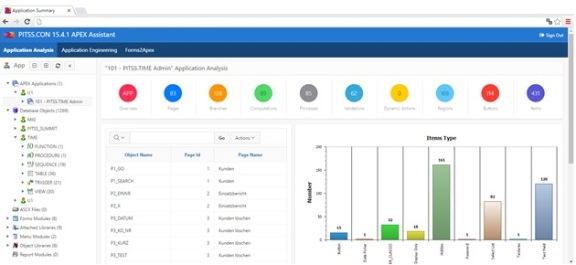Preparing the next PITSS.CON 16 version – with APEX Flows, APEX Diff, ADF Plugin, and an integrated Oracle analysis methodology
There was a time when being an IT specialist meant mastering a programming language, understanding how computers work, and designing things that make users go “ooh” and “aah.” There was a time when Oracle application development meant happily coding PL/SQL and designing screens with either Designer or Forms. Not anymore. We have learned to learn about Java and JavaScript, CSS, Groovy, and application servers – to name just a few. And people started getting so attached to their software choices that they transformed them into religions. There are the APEX believers – no other Oracle application development platform has ever generated such passions. And then there are the Java purists – nothing else except Java and the OO concepts can ever be considered as sane software choices. Not to mention .NET and its loyal supporters, and, of course, the “We’re still here” Forms developers’ community, not getting all the drama: “If it ain’t broke, don’t change it,” meaning, if Forms worked for 30 years, show me, please, another technology promising the same.
At the PITSS R&D department, we’re building PITSS.CON, helping Oracle developers develop smarter no matter which choices they make. And we do this while trying hard not to take sides. We realize that Forms is still the most-used technology among Oracle database applications, and that Forms applications are business-crucial and need urgent down-to-earth solutions for adapting to their new requirements. Implementing smart solutions starts with the basics, such as a virtual tour through the application sources using deep, visual analysis. This type of analysis allows us to look into our application from any angle we need. This way, we can easily spot improvement areas and then implement there custom-made smart reengineering solutions.

But we also see future software trends: new developer directions, new ways of designing the applications for tomorrow. So we came up with an integrated concept of analysis for the whole database application. For APEX, for instance, by just enabling the classic PITSS.CON analysis and reengineering processes for the APEX applications, we got amazing results such as APEX dependency flows, tracking dependencies throughout the entire Oracle landscape of an application, or searching and replacing APEX objects and properties. Even the classic Compare feature, which was so necessary when working with binary FMB files, is now also available for APEX applications, so we can compare different versions of an APEX application or page. And because we have such nice features for our APEX colleagues, we also came up with a refreshed APEX interface for PITSS.CON, so that we can use the core features of PITSS.CON from a modern, user-friendly interface.


We also did not forget our ADF colleagues. For ADF migrations, we have built a new JDeveloper plugin, helping ADF developers better manage their migration process. We are busier than ever in migration projects, and this is why we designed a new management module in PITSS.CON that allows us to assess migration projects, measure progress on an Agile points-based methodology, print burn-down charts, and estimate progress.
It all comes up together – no matter the technology choice we make, we know that the core design concepts of good software remain the same. This is what we strive to implement in the new PITSS.CON 16: core design concepts that help us rise above the complexity, gain perspective, and find our way through the Oracle jungle, no matter how wild it gets…
